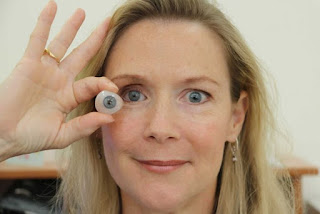Application of technology into healthcare has
typically been targeted to high demand illnesses and treatments. However, with
an increasing need to meet patient’s expectations combined with increased
accessibility and reduced costs, smaller healthcare fields are starting to
investigate its function and usability.
Services have historically been led by skills
and expertise, and recent developments
are being seen by ocularists in the field of prosthetic eyes who
acknowledge the potential benefit from technological advancement.
Utilising the technologies recently
investigated in maxillofacial prosthesis can start the evolutionary process
where products are continually re-designed and re-developed to achieve
excellent patient outcome and satisfaction levels.






